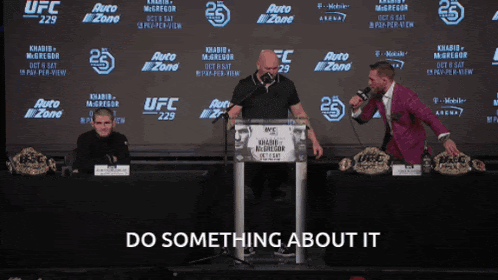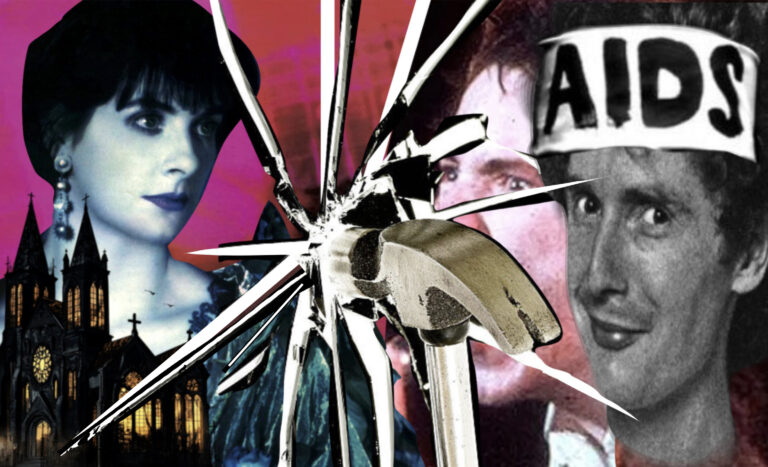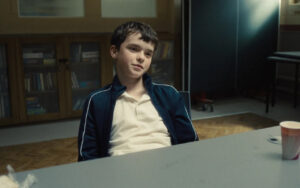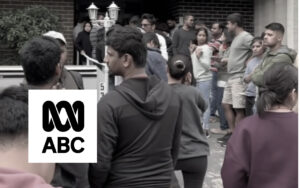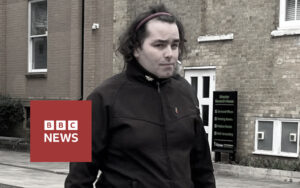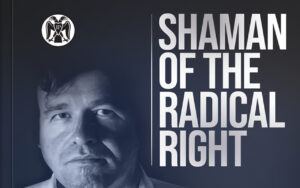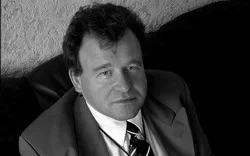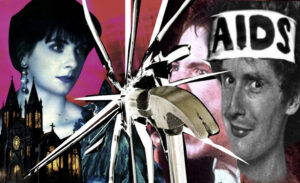Australian band Night Rites and their music video for Den
Punk And Its Discontents
Defining shoegaze music can be as vague as its origins. Brian Eno once called My Bloody Valentine “The vaguest thing in pop”. But it does appear that the concrete beginnings are Irish, Scottish and the British colony of Australia. Out of punk’s noisiness, there seemed to be an attempt to discipline the sonic beast, veering into something more mythical.
When we look back on “punk”, the older it gets the more manufactured it sounds. And it was. Punk was initially steered by mastermind tastemakers like US Government Cold War asset homosexual Andy Warhol and sex shop owner Malcolm McLaren. In both cases punk was a crude attempt to mainstream S&M and perverse sexuality. Malcolm McLaren’s Jewish grandmother taught him the most important thing to do was lie to people and that “to be bad was good”. David Vanian of The Damned called McLaren a devious “Fagin-type character from Oliver Twist”. McLaren himself referred to the group he managed, the Sex Pistols, as his “little artful dodgers”. Genociding Gazans from the sky is like shooting fish in a barrel, but taking over more powerful Western nations must be done through cultural manipulation and subversion.
So like any psychological operation on the public, punk was all about deception – the exploitation of youthful posing and dress-up instincts by older and larger forces behind the curtain. In the British context, punk could not exist as a phenomenon without the cooperation of government-controlled BBC TV and radio to roll it out. The subculture was created by the system to contain any real rebellion against the financial class. An illusion was created that you could fight the elites by becoming perverted. It would be Britain where punk’s generic uniforms, hair-dos and pop-art imagery would most crystalise as a complete commercial product.
Similar to other post-war counter-cultures fostered by international finance, this went beyond Sun Tzu’s wildest dreams. Oligarchs took away national sovereignty and in return gave individuals “freedom” over their own bodies. A transaction that costs elites nothing. But for the public it was very expensive because punk would further destroy what shaky post-war moral foundation was left. This had real-life consequences of broken families, drug addiction and a weaker collective. Pitched as something constructive and assertive with apparent accessibility, punk remains a psychological trap romanticised to this day. A misused and misunderstood adjective. Rather than targeting any serious enemies with its aggressive stances, punks humiliated, mutilated and aborted themselves.
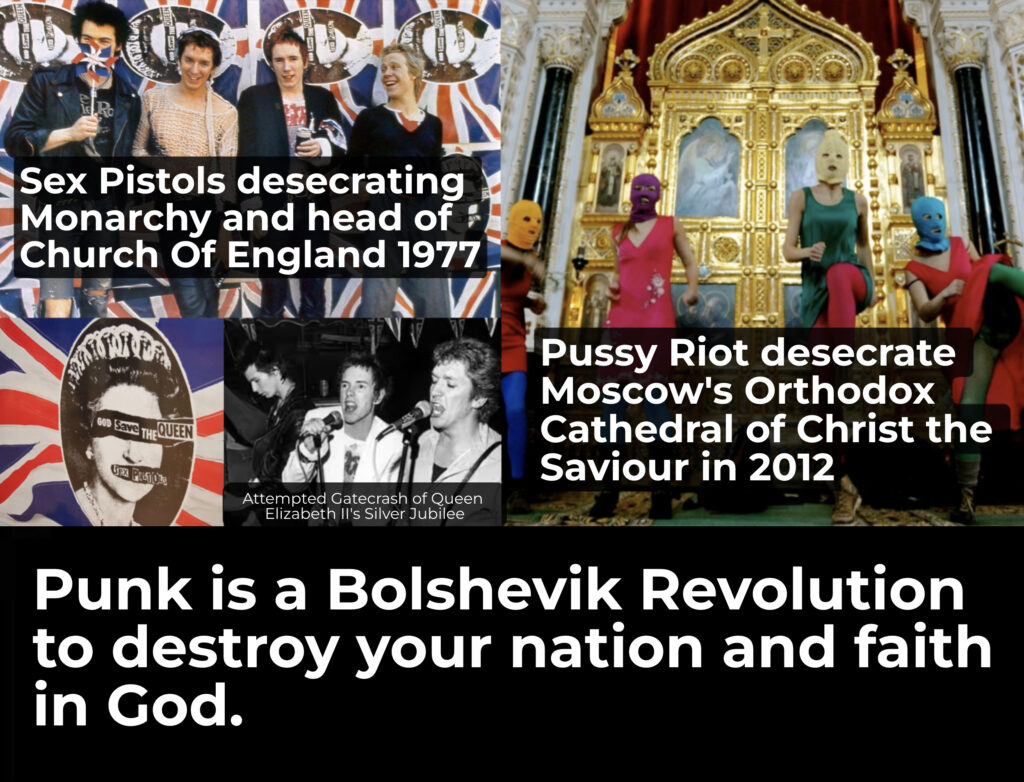
Bolshevism in the UK
The Sex Pistols biggest hit “God Save The Queen” was a Bolshevik revolution against the British monarchy. They didn’t need to execute the Royal family like they had previously done to Russia’s House of Romanov. McLaren’s project simply made an already non-sovereign monarchy impotent through culture-war. There were feeble attempts to censor or repress the record, but without an iron fist this notoriety just fed into promotion. The song should have been illegal for treasonous lyrical content, defacement of the Queen’s image and desecration of Queen Elizabeth II’s Silver Jubilee, where the band attempted to play the song from a boat named Queen Elizabeth on the River Thames, near the Palace of Westminster. If you tried the same thing in Thailand today against its monarchy, you would be put in prison for multiple counts of 15 years, probably culminating in a life sentence.
The British monarchy was entirely entwined with the nation’s Christian religion, not just by being head of the Church Of England, but fundamentally embedded in its 1,500-year Christian history. This includes having gifted the world the King James Bible translation, thought by some to be a miracle in and of itself. So a loss of faith in the Queen’s moral authority by the people would result in a loss of religious faith. Punk was a secularising force with false idols. McLaren’s operation was quite clear and open about its intent, declaring punk as the “Antichrist” in “Anarchy In The UK”, which he described as “a call to arms .. It’s a statement of self rule, of ultimate independence”. Punk, much like LaVeyan Satanism, was a repackaging of Ayn Rand libertarianism for a new audience. Often romanticised as “pushing the envelope”, The Sex Pistols should be seen in the context of other degenerates such as beat-poet Alan Ginsberg (openly a member of paedophile organisation NAMBLA) who fought to destroy rational censorship and Christian society with his work.
The destruction of the monarchy’s symbolic power was integral to the rise of Britain’s managerial grey state and the public’s drab acceptance of it. This attack on the Royal family, even a monarchy that had become merely symbolic, was an attack on British ethnic identity. A racial assault on Britain by parasitic outsiders. It was not just a song, but an anthem that grew out of an orchestrated public event. No different to Edward Bernays engineering public stunts that lead to women smoking in the 1920s. But this time the man behind the curtain would be Malcolm McLaren. He openly thought of the band members as “clay that could be sculpted” and people he could “use and manipulate” for his own agenda. And, like Warhol, punk would be synonymous with pop-art branding, changing the meaning of the Union Jack and royal imagery as visual language.
This is what I mean by punks targeting themselves, because those who adopted it struck their own nation and people. Punk was a treasonous and morally corrosive pathogen injected into a naïve public. Rather than defending against external forces, punk was the disease from outside dismantling everything that was normal or healthy within. The original Bolsheviks were funded by “Wall Street bankers” and punk was a transplant from the same New York elite. This playbook was tried again in modern Russia with a fluent English-speaking feminist punk band backed by “western NGOs”. Their lazy name “Pussy Riot” followed the same formula as the Sex Pistols, combining sex and violence in an appeal to hormonal and impressionable youth. In 2012 the group stormed Moscow’s Orthodox Cathedral of Christ the Saviour and illegally performed their offensive music. But unlike the U.K, such anarchy towards the sacred would be punished with a prison sentence.
![]()
In 1998 Marilyn Manson was on the cover of every magazine with this number one hit album that sold transexualism, drug-use and extreme blasphemy to the mainstream public. 25 years later we are giving puberty blockers to children, are more atheistic, and have widespread drug addiction epidemics. Image from Wikipedia.
Selling Drugs, Homosexuality And AIDS To The Public
The Sex Pistols were as much about selling degenerate bondage attire and associated lifestyles of “Dame” (WTF?) Vivienne Westwood as they were shifting records. An already-underway sexual liberation movement would slide into a darker and more self-destructive territory with punk. Saint Paul talked about “the slavery of sin” and Saint Augustine said “a man has as many masters as he has vices”. Human weakness was exploited by the Marxist author of “The Sexual Revolution” Wilhelm Reich, who theorised “if we get people thinking about sex and being involved in more sexual activity, the idea of God will evaporate from their minds”. The blue-haired lesbian uniforms of current-day teachers brainwashing kids with queer theory and running government departments into the ground are just watered-down punk aesthetics absorbed into the managerial class.
Punk’s bisexuality and needle-friendly drug-use would join forces with the gays to create AIDS in the late 1970s. Both punk and the gay leather-bar scene had shared aesthetics and hedonistic culture without moral barriers. What was bad was good. McLaren went on to popularise rap music among Whites with his solo release “Buffalo Girls”, which was later sampled and referenced by Eminem on the lead single of his biggest selling album. McLaren then worked to mainstream homosexual drag culture with “Deep In Vogue” a year before Madonna did the same with her conceptually identical number one hit “Vogue”. So apart from manufacturing punk, he also brought us wiggers and drag queen story hour.
Warhol’s Velvet Underground was basically one long gay chem-sex album. The Velvet’s frontman Lou Reed said that although he was Jewish, his “real god was rock ‘n’ roll”. They glamourised a cocktail of sodomy and heroin that would foreshadow the Sackler Family’s orchestrated oxycontin epidemic. This proto-punk foreshadowing would be perfected later by David Gefen’s glossier Seattle grunge, Nirvana’s Nevermind being one long “Got Heroin?” commercial for kids. Nevermind arguably took its title from the Sex Pistols only completed album “Never Mind the Bollocks, Here’s the Sex Pistols”.
Left: 1970s Malcolm McLaren’s fashion designer wife Vivienne Westwood’s fetish and sadomasochist bondage outfits being modelled atop rubble in London.
Right: 2013 Vivienne Westwood putting her name, face and influence towards making “climate revolution” fashionable. pic.twitter.com/LYlmX1olD1
— Megalife3000 (@burnsidefi26416) February 27, 2025
It would be no surprise that the Sex Pistols’ impressionable dunce “bassist” Sid Vicious would murder his arranged Jewish junkie handler-girlfriend from New York Nancy Spungen and kill himself after being moulded by McLaren. John Lydon (AKA Johnny Rotten) broke down in tears explaining how the naïve Sid was led to his own death for McLaren’s art-school amusement. A similar fate would hit Kurt Cobain with his heroin use and self-inflicted shotgun suicide all encouraged by his yenta wife Courtney Love. Five years before meeting Cobain, an unknown Love auditioned for the role of Nancy Spungen in the biopic Sid And Nancy, but the film’s investors insisted on an experienced actress for the co-leading role. Instead, director Alex Cox wrote-in a new character of Gretchen, one of Sid and Nancy’s New York junkie friends, specifically for Love to play.
Parallel to punk was industrial music with Throbbing Gristle’s Genesis P-Orridge becoming a full-blown drug addicted transexual. Industrial was a cultural laboratory of concentrated degeneracy for those already numb to feeling by punk. Marilyn Manson’s “Antichrist Superstar” and overt tranny aesthetics being on the cover of every magazine was pre-internet cultural domination that should leave us with no questions about how we got to our current predicament. The 1980s “Satanic Panic”, a completely rational reaction by middle-American Christians against the booming heavy metal music industry failed to stop capitalism’s combine harvester upon young souls. Thus 1990s industrial feasted itself upon a society that was by that time a spent force and enjoyed the last days of physical media where album sales were still profitable and music videos still relevant. It was all one distinctively downward spiral and much of the public who consumed this material went down with it. You can see them in the very middle-American towns that once protested such music, staggering around wearing Nine Inch Nails T-shirts addicted to fentanyl.
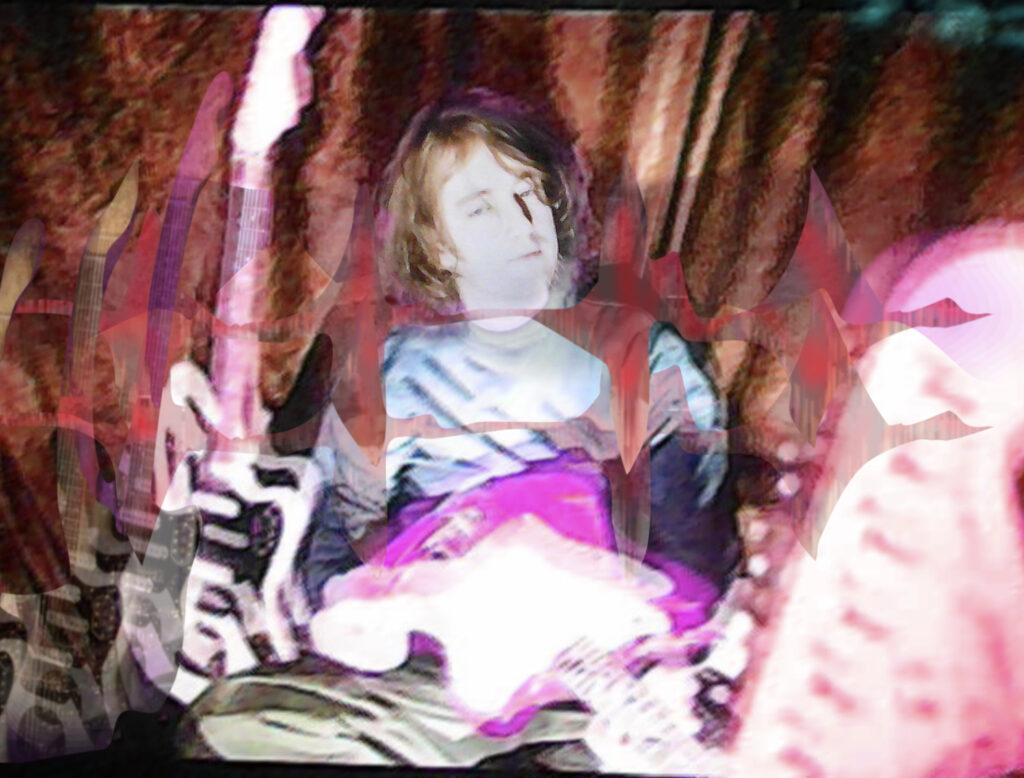
Kevin Shields of Irish shoegaze band My Bloody Valentine
Ambient Light At The End Of The Tunnel
But with enough people jamming and playing around with equipment inspired by these often simple or attainable musical styles, it was only natural that better things would emerge from teenagers accessing and experimenting with the same tools. If punk did one good thing, it was to encourage anyone to adopt a DIY ethos and work intuitively. Around the same time as punk there was also interesting stuff that could be drawn from Krautrock and synthpop. Both Tangerine Dream and Kraftwerk were classically trained and this came out in their modern musical instrumentation. The exploding post-punk scene, with thoughtful acts like The Smiths, allowed young people into increasingly high-tech studios to become perfectionists, new wave versions of Phil Spector and Brian Wilson with their own theories on sound
Enter figures like Rowland S Howard of The Birthday Party (Australia), Robin Guthrie of the Cocteau Twins (Scotland) and Kevin Shields of My Bloody Valentine (Ireland). Introverted figures that turned punk and new-wave on its head. They took the public’s new appetite for loud undisciplined noise and did something more refined with it. Rowland S Howard’s more abrasive work with the Birthday Party created an aural ether to inspire the softer dream-pop of both The Cocteau Twins and pink tones of My Bloody Valentine. White noise and guitar feedback that was once jarring became more transcendent in their hands.
Such protagonists were often more interested in how an instrument was recorded and treated than the actual notes being played. None of these people debased themselves quite like Iggy Pop begging to be someone’s dog, Lou Reed longing to be sodomised and injected or the Ramones singing how-tos for turning tricks. This new crop of studio orientated noisists were happy to let the guitar do the talking. In the case of My Bloody Valentine, lyrics were often whispered or ambiguously delegated to female guitarist Bilinda Butcher. Cocteau Twins vocalist Elizabeth Fraser did belt out her lyrics, but it was often unclear as to which language or whether they were real words at all. Critic Jason Ankeny says: “Fraser is an utterly unique performer whose swooping, operatic vocals relied less on any recognizable language than on the subjective sounds and textures of verbalized emotions.”
The term “shoegaze” literally refers to guitarists performing antisocially, looking downwards at the myriad of fuzz-pedals at their feet being stepped-on, triggering distortion and reverberation. Zeroing-in on a certain delicate sound aesthetic and atmosphere that the listener would also be able to envelope themselves in. This concern is symphonic and ambient, in some ways closer to classical music experiences than punk rock’s bright and instant gratification. This was reactionary and metaphysical. Shoegaze should not just be seen on its own but in the larger context of ambient and contemplative music that predates rock ‘n’ roll.

Enya creates ambient ethno-folk music and remains the highest selling solo artist in Irish music history. Image from Wikipedia.
Siren Songs
Elizabeth Fraser’s vocal on This Mortal Coil’s Tim Buckley cover Song Of The Siren became an obsession for film director David Lynch. It was a minimalist arrangement, almost entirely acapella as if amplified and reverberated in an ancient cave. David Lynch was unable to secure the budget to use the piece in his film Blue Velvet, so an attempt to replicate its ambient power would inspire the long-term musical collaboration between composer Angelo Badalamenti, vocalist Julee Cruise and Lynch himself. Mysteries of Love would have more restrained vocals amongst a lush bed of synthesisers. Along with sound-designer Alan R Splett, who previously worked with Lynch to create the audio-landscape of cult midnight movie Ersaserhead, this stable of artists collaborated on an entirely new sound universe. Blue Velvet would be an American classic and prototype for Lynch’s biggest stamp on the culture with the TV series Twin Peaks. Many instrumental and vocal pieces from Twin Peaks, often lofty and ambient, would define Americana in the modern era.
Enya was a similarly cinematic creation in that it was her overtly ethno-folk score for the BBC historical documentary The Celts that led to the soundtrack being commercially released and the start of her solo career. The Celts has a sentimental pop quality as if John Hughes had made a movie in the medieval period, or the top Irish choir-girl was given the latest keyboards, samplers and unlimited studio time. She brought vast ambient ambition to pop-music with her mixture of synthesizers, FX-treated vocals and traditional Irish lyrics. Enya was raised in the Irish-speaking region of Gweedore with eight siblings. In an era of hyper-sexualised Madonna (who was an overt attack on the Catholic faith) and drug-soaked alternative-rock exploding on MTV, Enya was mocked for being square by not making the same moral transgressions. But it was bolder to ignore the trends. Enya purposely didn’t listen to the radio and cocooned herself away from popular cultural influence. Her aesthetic instead remained an unmovable rock against crashing ocean currents and blowing winds. Like the stone of a church wall that wears centuries of thrashing storms and still stands. Her albums have the power to make you stop what you are doing and listen with complete focus to the point that it’s confronting. You may spontaneously start to shed tears. Apart from the production and arrangement being so engaging, it’s the reminder of who we are that cuts right through to the soul. Enya remains the highest selling solo-artist in Irish musical history.
There’s something about this homeland and ethnicity that conjures spatial musical experiences like it’s in the blood. Unlike the UK, Ireland has remained far more ethnically and culturally homogenous. They dont have a monarchy you can just come and destroy. Instead they have a complicated photosynthesis of the Vatican, Catholic Saints and their own folk heroes that can’t easily be erased. Even when there is a bad Pope, Irish Catholics tend to ignore him and maintain things more on the local level. Sigmund Freud famously said “psychoanalysis doesn’t work on the Irish” and that “when in psychic trouble, the Irish go to poetry or storytelling”. Interestingly, Ireland also stayed neutral in WW2. During the recent globalist push to flood the country with third-world immigration, the Irish have shown the most resistance. So even if all the Irish musicians mentioned are libtards, they still ultimately come from a more nationalist milieu. Hence despite being such a small nation, they are able to impart their distinct indigenous sensibilities upon the world of music.
The end of shoegaze was partially led by establishment UK critics who branded it as “pretentious and middle-class”. Shoegaze did not provide the same politically self-destructive or phony-rebellious function as punk. Nor did it come with much merchandise or uniform to sell. It was too exploratory and off-plantation, so momentum had to be cut like Talk Talk’s sensitive latter work was starved of oxygen. Kevin Shields and Talk Talk’s Mark Hollis had idiosyncrasy and stubbornness that turned record label executives’ hair grey. Conversely, this made such musicians isolated and reclusive. Britain was instead given bisexual heroin-use with Suede spearheading “Britpop” and blockheads Oasis regurgitating The Beatles like A.I. software. Oasis were co-opted by Tony Blair to help win his first election as part of the “Cool Britannia” psychological operation. Now they are being wheeled-out again 30 years later to please Britons while their nation gets destroyed.
Night Rites – DEN
The recent track “Den” by Australian band “Night Rites” is indeed a zone experience. It has a bit of jangling like The Birds, organs twirling like other 1960s psychedelic acts.. But it leaps forward with an arrangement that creates sophisticated cacophony and drone. This is not from the 1990s shoegaze and alternative rock era but our own time period. Slipping and sliding audio layers then get more complicated, keeping our ears guessing amongst a wide vista. Whispery delays of vocals, that often materialise like digital mistakes, feel very much of this moment and not just nostalgic throwbacks to previous eras. The studio mix is perfect, it’s constantly offering another level to be appreciated. But its biggest asset is the overall wall of noise that provides a blanket of atmosphere. This is well illustrated by a new music video in the second half where it attempts to literally depict the sound as if played in the ocean. The film clip is a kind of shoegaze expression in and of itself featuring lots of textured and noisy imagery.
People often say rock is dead, and in terms of popularity and the current zeitgeist it is. The idea of people even playing instruments anymore would make many zoomers look at you strange. Recorded music post-physical media is also too abundant and fragmented into a million financially worthless markets. Nothing seems to create critical mass and we tend to just dwell on the past. New bands that could have played arenas 30 years ago are now forced to ask for crumbs through online patronage. But just like those teenagers in the past that were inspired by punk to do something more interesting with their guitars, intuitively conjuring the great orchestras, concert halls and places of worship – there remain a class of spare-room and backyard alchemists focused on getting something sonically new out of the electric guitar and rock band format.
Shoegaze’s Anglo-Celtic origins seem to channel old stone church ambiences, choirs and the white noise of pipe organs. Subdued voices gliding from one side of a hall to another. Grand spaces transform sound because architecture is an instrument too. Cathedrals with finely tuned acoustics, light-altering stained glass windows and astonishing sculpture were not just technological heights of their time but remain the absolute zenith of Western civilisation. Maybe what shoegaze is channelling is our instinctive way of returning to religious observance. The Dream-pop of the Cocteau Twins used chimes and church bells to manifest diffused landscapes of European fairytale. Enya expressed great fondness for churches and said her use of reverb was to create a religious aesthetic. Roland S Howard misused a collection of guitar pedals to create an inky canvas for Nick Cave to project his southern gothic preacher onto. Kevin Shields spending weeks to set up equalisation for recording one guitar track and years to complete work is monastic in its devotion and truly mythological in artistic narrative. The word “Rites” in Night Rites means “a religious or other solemn ceremony or act”.
Phil Spector’s wall of sound technique is really just replicating choirs and orchestras, multiple people playing or singing the same thing at once with the added magic of physical space. It was nothing new, it literally came from the stone age. These dimensions are available to all of us because of accessibility to recording technology.. We can put a microphone anywhere. The hard work involved to make something perfect, specific mic-placement and the elbow-grease of recording requires trial, error and vision to hold it together. Analogue recording being another barrier to access that adds a certain singular magic. But channelling the divine inspiration that is behind anything good is often sidestepped for the easier options provided by prefabricated sample-packages, software short-cuts and now A.I. conjuring of worthless muzak. Basically computers just making the music for us. But labour is the source of all value and we know when we hear it. You will also know when you make it. Artistic movements can start from a mustard seed of faith in an idea. As either a listener or a musician, if you are unhappy with where music is at – do something about it.
